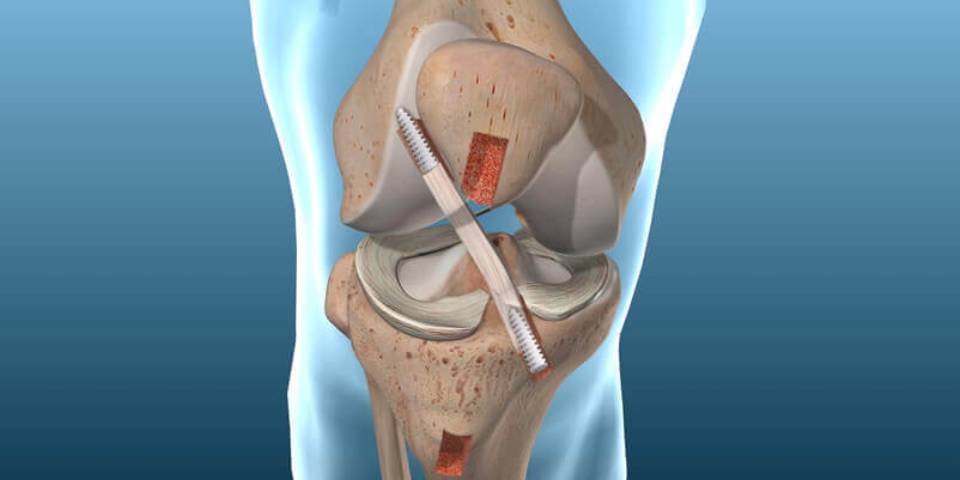- 27/02/2023
- by Dr. Ankur Kumar
- Latest Blog
What Is the Anterior Cruciate Ligament?
The ACL (Anterior Cruciate Ligament) is one of the ligaments in the knee joint. A ligament is a tough, adjustable band of tissue that holds bones and cartilage concurrently. The ACL connects the femur (thigh bone) and tibia (shin bone) and serves to stabilize knee joints. ACL is remarkably strong but it’s also tending to breakage.
What Is an ACL Tear?
The ACL (anterior cruciate ligament) tear is one of the most dangerous injuries in sports and athletics. An ACL tear is when the anterior cruciate ligament evolves completely ruptured. Once torn, an ACL cannot regrow or recover on its own. Weekend fighters and non-athletes can also sustain an ACL injury. ACL rupture occurs in non-athletes mainly because of twisting the knee.
Dr. Ankur Kumar has a special interest in ACL reconstruction surgery and treatments in PCMC, Pune. Also, He provides the best Orthopedic Treatments & ACL Reconstruction in PCMC, Pune. Either way, If you suspect you have a torn or injured ACL, pay attention to the following key ACL tear signs.
What are the types of ACL tears?
The best orthopedic Doctor in PCMC, Pune explains the types of ACL tears:
- Grade One: Your ligament has been stretched, but it even does its job of stabilizing the knee joint.
- Grade Two: Your ligament has been stretched and relaxed. It’s somewhat torn.
- Grade Three: Your ligament is torn – divided into two segments. This is a very painful injury.
ACL tears are often accompanied by damage to the collateral ligaments, joint capsule, articular cartilage, or the menisci.
What are the symptoms of an ACL tear?
Common symptoms of an ACL tear include:
- Severe Pain and Instability: An ACL injury usually causes it hard to walk or stand because of intense pain in your knee. If you trying to walk, you can’t do it so comfortably. When you try to stand, you may sense that your knee is unstable and cannot support body weight. It is important to say that the experience of pain is different for all. It means that the pain you feel does not necessarily connect to how severely your ACL is injured.
- Reduced range of motion: Athletes usually put on a lot of stress on their joints during stretching, sports, or when performing. When done incorrectly, ligaments are torn and ACL is one of the most affected tissues. Though a patient can walk comfortably after the ACL rapture, the range of motion is normally restricted as the knee is unable to provide the necessary strength.
- Rapid swelling: The ACL gets torn, and blood usually overflows the crisscrossing ligament fibers. The uncommon flow of blood outcomes in swelling and a deformed joint. The knee touches warm and may turn red. For negligible distortion, the swelling is considered to start subsidizing after two days or more than that it shows a ruptured ACL.
- A Popping Sound: If you suffer an ACL rupture, hear a ‘pop’ sound coming from the knee. It happens during activities that involve slowing down, changing direction, and jumping
- A feel the knee is giving out: Instability may be especially conspicuous during movements that strain the knee joint, such as walking downstairs and hanging on one leg.
How is an ACL injury diagnosed?
A thoroughgoing physical test and imaging tests such as X-rays, MRI, or CT scans are often used to analyze an ACL tear.
How is an ACL tear treated?
The treatment of an ACL tear relies on the patient’s signs, examination, the severity of the injury, and the individual’s lifestyle and activity level. Here are some of the treatment options include:
1) Non-Surgical Treatment:
For mild ACL tears, non-surgical treatment such as rest, ice, compression, and elevation (RICE), physical therapy, medication, bracing or immobilization, and an incremental progression back to regular workouts and sports.
2) Surgical Treatment:
Surgical treatment is recommended for individuals who are physically active or complete ACL tears to reconstruct the ACL.
Surgical choices may vary based on the kind of ACL injury, whether the patient has open or closed growth plates and the type. Surgery concerns replacing the torn ligament with a graft of tissue from another portion of the body or a donor. This process can be done arthroscopically, which concerns making tiny incisions to underestimate scarring and enable faster recovery.
Conclusion:
An ACL tear is a typical injury that can affect anyone, but it is more ordinary in athletes who participate in sports that concern sudden stops and modifications of direction. If you experience any of the signs or symptoms of an ACL tear, make sure to get a proper diagnosis and proper treatment from an expert orthopedic consultant. Dr. Ankur Kumar is among the greatest, most highly-skilled joint replacement surgeon in PCMC Pune, renowned for his expertise in the industry. He seamlessly merges cutting-edge technology with advanced techniques, for excellent orthopedic treatments and other sports injury treatments that harness success at every step. With a correct diagnosis and superior treatments, we improve each patient’s quality of life. To make an appointment Click Here or call on 9731132793 for world-class treatments.



